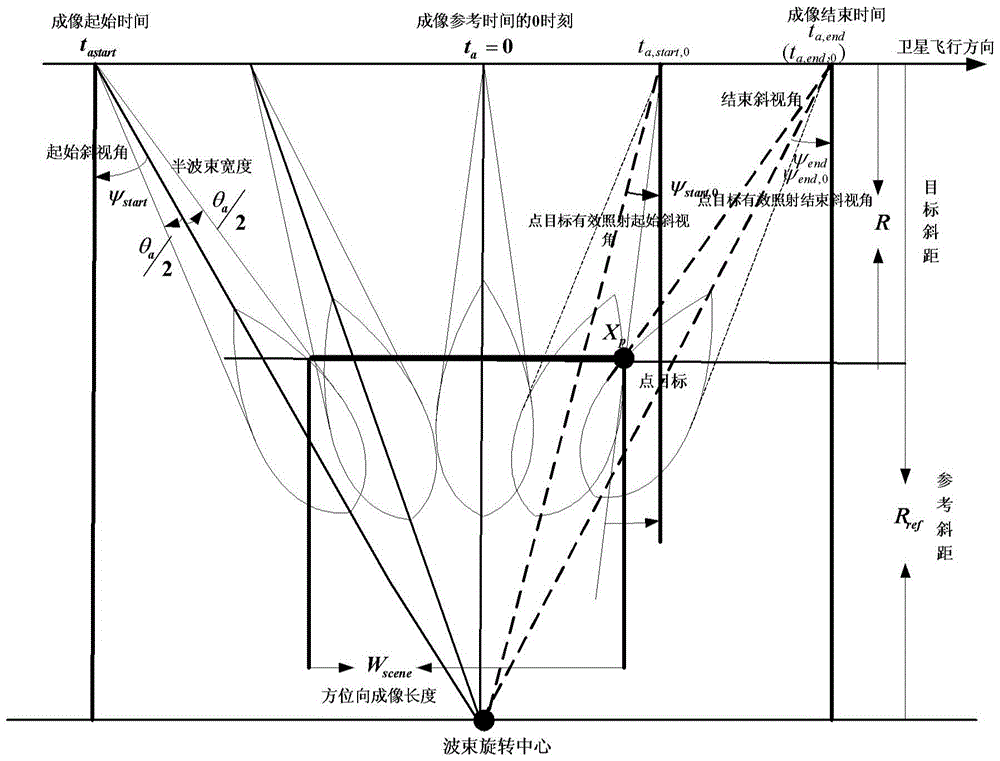A Method for Acquiring Azimuth Parameters of Spaceborne Synthetic Aperture Radar Sliding Spotlight Mode
A technology of synthetic aperture radar and sliding beamforming, applied in the directions of radio wave reflection/re-radiation, utilization of re-radiation, measurement devices, etc., can solve the problems of large amount of calculation, complex operation, low efficiency, etc., and avoid echo simulation The effect of processing the verification process with imaging, simplifying the scheme design process, and improving the efficiency of engineering design
- Summary
- Abstract
- Description
- Claims
- Application Information
AI Technical Summary
Problems solved by technology
Method used
Image
Examples
Embodiment Construction
[0022] The following will combine the additional figure 1 and figure 2 The present invention will be described in detail.
[0023] The basic principle of spaceborne SAR sliding spotlight mode is as follows: figure 1 As shown, during a period of imaging time, the satellite flies along the orbit at a certain speed, controls the azimuth to point to the center of the beam, and makes the azimuth to the center of the beam at a certain initial oblique angle ψ start Start to rotate around the center of rotation, and the oblique angle reaches the end oblique angle ψ end end. In engineering, the center of rotation is a virtual point under the surface, and the slant distance corresponding to the center of rotation is greater than the slant distance of the target point. On the ground, the center of the beam moves from left to right, and slides over all targets in the imaging area in turn. , the thick black line in the middle of the figure is the imaging area. figure 1 The large soli...
PUM
 Login to View More
Login to View More Abstract
Description
Claims
Application Information
 Login to View More
Login to View More - R&D
- Intellectual Property
- Life Sciences
- Materials
- Tech Scout
- Unparalleled Data Quality
- Higher Quality Content
- 60% Fewer Hallucinations
Browse by: Latest US Patents, China's latest patents, Technical Efficacy Thesaurus, Application Domain, Technology Topic, Popular Technical Reports.
© 2025 PatSnap. All rights reserved.Legal|Privacy policy|Modern Slavery Act Transparency Statement|Sitemap|About US| Contact US: help@patsnap.com



